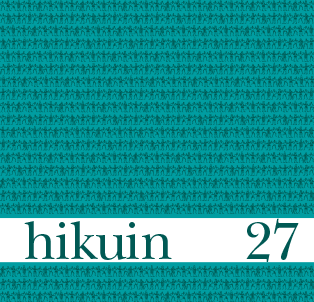Björned – benanalyser och kulturhistoriska tolkningar
Undersökningar kring en nordsvensk begravningsplats från tidig medeltid
Resumé
Björned – bone analysis and historical interpretations.
Investigations of an early medieval burial place in northern Sweden
By Leif Grundberg, Anders Götherström and Barbro Hårding
In the small village called Björned in Torsåker parish, in the county of Ångermanland in northern Sweden, an early medieval cemetery was investigated. The investigation forms part of the Styresholm project, which involves the study of the area adjoining the lower part of the Ångermanälven river during the Middle Ages and the Iron Age. The Björned cemetery measures only c. 25×12 m. It is not mentioned in historical sources and nothing above the surface reveals that this is a cemetery. During the excavation more than fifty graves were identified, which all followed Christian burial customs. 14Canalyses of human bones suggest that the cemetery was used from the 10th century until the 13th century, although an adjoining settlement existed from the early Iron Age. Most of the bone material from the graves is well preserved and suitable for scientific investigation. The present study has been directed towards problems connected with the change of religion, the parish organisation, the family structure, the social organisation, and the power structures. These are topics that arise when the results from the excavation are compared with other ancient remains, existing churches, placenames and the topography of the region. The article presents the research in progress, including molecular analyses and studies of epigenetic traits. One of the main questions dealt with is whether Björned was a family cemetery. The anthropological analyses suggest that several individuals are closely related. This theory is supported by the molecular analyses. A Y-chromosomal short tandem repeat, DYS388, was extracted and amplified from some individuals from Björned. Alleles could be identified in six individuals. The composition of the alleles was such that the individuals could not be regarded as a sample of a Swedish population in a genetic sense. More likely they represent a sample drawn from a Same population or a Swedish family with a Same element. A short introduction is also given to further investigations that have started recently, including comparative studies of the Viking Age cemeteries at Björkå and Holm in Överlännäs parish. The importance of relating the results with a local and regional historical context is stressed in the article, which also deals with the early Christianisation, the Same influence and gender perspectives. Using medieval churches, Viking Age silver-hoards, and rich chamber-women graves as the point of departure, it is argued that Björned was situated in a settlement area of central importance. The centrality is thought to have been based on transit exchange and transport of products from the interior of Norrland.
Referencer
Eriksson, Lisette & Sofia Margareta Bergegård: Björned. En studie av en tidigkristen gravplats i Torsåkers sn, Ångermanland. Opublicerad seminarieuppsats i arkeologi, Umeå universitet 1992.
Gejvall, Nils-Gustaf: Westerhus. Medieval population and church in the light of skeletal remains. Lund 1960.
Grundberg, Leif: Religionsskifte i norr. En tidigmedeltida begravningsplats i Björned. Medeltid i Ådalen. Styresholmsprojektet 1986-1992. Red. Leif Grundberg. Härnösand 1992a, s. 61-81.
–:Torsåkers medeltidskyrka och sockenbildningen i Ångermanland. Medeltid i Ådalen. Styresholmsprojektet 1986-1992. Red. Leif Grundberg. Härnösand 1992b, s. 83-115.
–:(red.): Medeltid i Ådalen. Styresholmsprojektet 1986-1992. Härnösand 1992c.
–:Gravar, kyrkor och människor – aspekter på religionsskiftet i Mittnorden. Några exempel från pågående undersökningar i Ångermanland och Medelpad. Det Kongelige Norske Videnskabers Selskab. Skrifter 1, 1997, s. 30-53.
–:Möt de medeltida björnedsborna genom skelettåkern i Torsåker. Populär Arkeologi nr. 2 2000, s. 10-13.
Grundberg, Leif & Pia Nykvist (red.): En norrlandsbygd möter yttervärlden. Styresholmsprojektets medeltidssymposium på Hola folkhögskola 26-28 juni 1992. Härnösand 1994.
Gräslund, Anne-Sofie: Kristnandet ur ett kvinnoperspektiv. Kristnandet i Sverige. Gamla källor och nya perspektiv. Red. Bertil Nilsson. Projektet Sveriges kristnande. Publikationer 5. Uppsala 1996, s. 313-334.
Götherström, Anders, Leif Grundberg & Barbro Hårding: Kinship, Religion and DNA: Y-Chromosomal Microsatellites Used on a Medieval Population. International Journal of Osteoarchaeology. (In press).
Götherström, Anders & Kerstin Lidén: Guidelines for work with ancient DNA developed at the Archaeological Research Laboratory. Laborativ Arkeologi 10-11, 1998, s. 55-57.
Heljedal, Katarina: Undromskatten och andra vikingatida silverskatter i Ångermanland. Opublicerad seminarieuppsats i arkeologi, Umeå universitet 1989.
Hårdh, Birgitta: Silver in the Viking Age. A Regional-Economic Study. Acta Archaeologica Lundensia, Series in 8° No. 25. Stockholm 1996.
Nilsson, Bertil: Kvinnor, män och barn på medeltida begravningsplatser. Projektet Sveriges kristnande, publikationer 3. Uppsala 1994.
Sawyer, Birgit: Kvinnor och familj i det forn- och medeltida Skandinavien. Occasional Papers on Medieval Topics 6. Skara 1992.
Stuiver, M. & P. J. Reimer: Radiocarbon 35, 1993, s. 215-230.
Wennerstrand, Elisabeth. Tre skattfynd i Västernorrland. En korologisk jämförande studie av skattfynd i Sverige, Danmark och på Västslaviskt område från yngre vikingatid. Opublicerad seminarieuppsats i arkeologi, Stockholms universitet 1994.
Zachrisson, Inger (red.): Möten i gränsland. Samer och germaner i Mellanskandinavien. Statens historiska museum. Monographs 4. Stockholm 1997.
Downloads
Publiceret
Citation/Eksport
Nummer
Sektion
Licens
Forfatter og Forlag.





